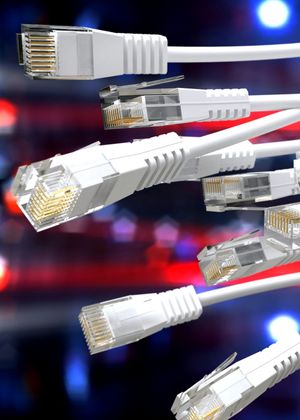If you’re a gamer, chances are you’ve had to deal with some pretty complex network issues. But did you know there is an easy way to check your ethernet cable without having to buy a fancy tester? Read on to find out how!
Check The Ethernet Cable Endpoints
The first thing that you should do is check the ends of the cable for damage.
A frayed or damaged cable end could be causing signal disruption or loss, resulting in poor connection quality. Make sure that all connectors are firmly attached and free of dirt or dust, as these can also interfere with signal strength. If the endpoints look good, proceed with testing the cable.
Testing The Cable With Ping Commands
The best way to test an ethernet cable without using a tester is by using ping commands.
These commands allow you to send out tiny “packets” of data and measure how long it takes for them to be delivered back, which in turn tells you if the connection is working properly. Here’s how it works:
- Connect one end of the ethernet cable into your PC and the other end into your router or modem.
- On Windows 10, open up the Command Prompt and type “ping (router IP address).” This will send out a packet of data from your computer to the router and measure how long it takes for it to come back. If it takes less than 200 milliseconds (ms), then the connection should be working correctly.
- To check that both ends of the cable are working properly, type “ping (PC IP Address).” This will send out a packet of data from your router to your PC and measure how long it takes for it to come back. Again, if this takes less than 200 ms, then the connection should be functioning properly.
- If either of these commands takes more than 200 ms, then something is wrong with your ethernet cable or connection, and you should consider replacing or repairing it as soon as possible!
Using Network Diagnostic Tools
If you want something a bit more user-friendly than using ping commands directly from Command Prompt, then another great option is using network diagnostic tools like PingPlotter or PathPing, which provide visual representations of latency over time so that you can easily identify any anomalies or issues with your connection.
These also allow you to pinpoint where exactly any connectivity problems are coming from so that they can be addressed quickly without having to resort to guesswork or trial and error methods!
Testing Connections Between Two PCs
Finally, if all else fails, you can try testing each end of your ethernet cables by connecting them directly into two computers on either end of your network setup and seeing if they establish a connection successfully.
This will require two computers with working Ethernet ports, but it's worth trying if all other options have failed, as it will give you an indication as to whether or not there is something wrong with either end (or both) of your cables. A good connection should light up the appropriate indicators on each device's network connection points.
Conclusion:
Testing an ethernet cable without a tester doesn't have to be complicated - in fact, there are several simple ways that gamers can use in order to diagnose their own networking issues quickly and accurately!
Whether you choose to go with ping commands directly from Command Prompt or opt for one of many graphical network diagnostic tools available online today, or direct connection route, testing an ethernet cable without a tester has never been easier!
So what are you waiting for? Get out there and start troubleshooting those pesky networking problems today!
Looking to replace faulty cables or for the best ethernet cables available on the market for gaming or general use? Then tap the button below to learn more!








